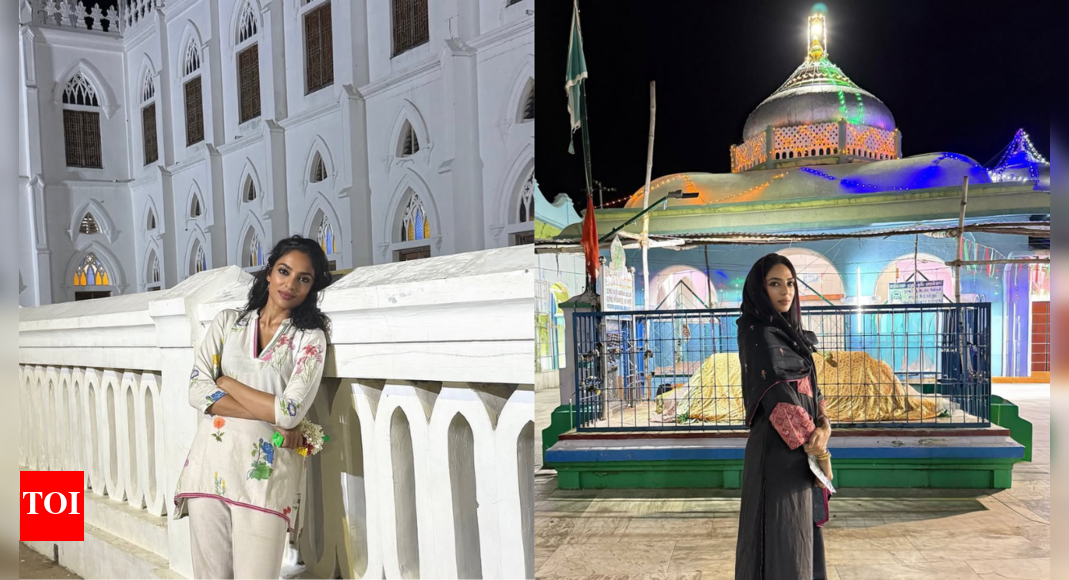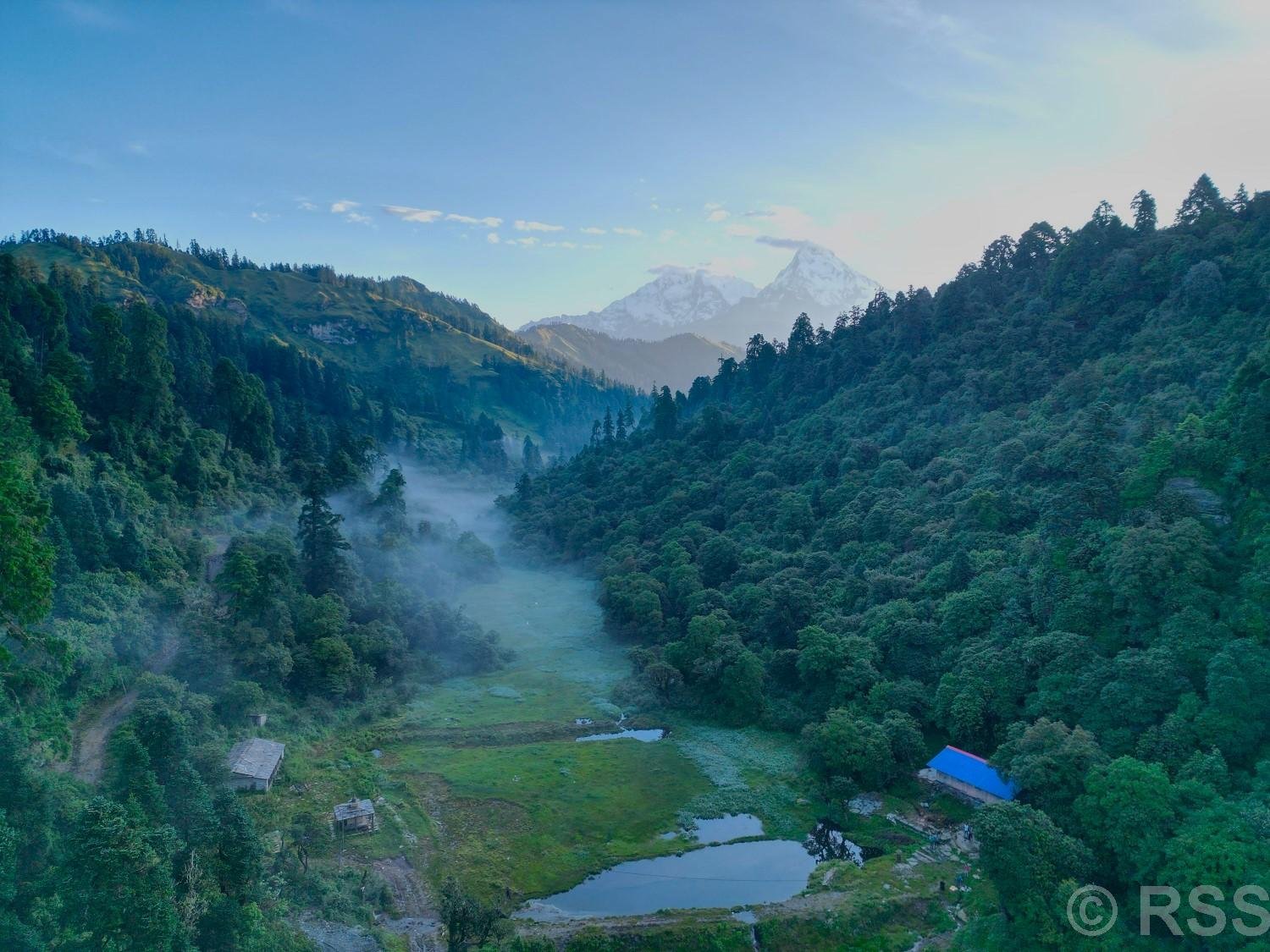Spiritual Travel
Millions of pilgrims travel to Lourdes each year. What made it such an important symbol of hope and healing?
(THE CONVERSATION) Thousands of apparitions of the Virgin Mary have been reported by Christians across the world, from fourth-century Asia Minor, which is now Turkey, to contemporary California. Of all of these, the most renowned are the visions of Our Lady of Lourdes, reported in the mid-19th century by a teenage girl in the French Pyrenees mountains.
Ever since, devotion to Our Lady of Lourdes has gripped the Catholic imagination. Lourdes is one of the very few apparitions the Vatican has officially commended as worthy of belief, with its own feast day, Feb. 11, in the church’s annual liturgical calendar.
Some 6 million pilgrims come to the shrine in Lourdes, France, each year to pray and seek healing.
This popular pilgrimage is one of the most visible examples of the devotion of many Catholics to Mary. I am a Jesuit priest and theologian whose research focuses on Mariology, the academic study of ideas about Mary in Christian history.
Some 6 million pilgrims come to the shrine in Lourdes, France, each year to pray and seek healing.
The Lady in the Grotto
In 1858, a 14-year-old girl named Bernadette Soubirous reported having 18 visions of a beautiful “young lady” in a cave near Lourdes, which was then a provincial town. Soubirous said that the figure identified herself as “the Immaculate Conception” and instructed the girl to dig into the earth and drink the water she found there. In other messages, the lady asked for a church to be built there so priests could come in procession.
Reports of the events drew large crowds who believed them to be apparitions of the Virgin Mary, and many people began attributing healing properties to the waters of the spring. These extraordinary events soon attracted the notice of the Parisian press and gained the support of the French imperial court.
Many Catholics interpreted the apparitions as confirming the doctrine of Immaculate Conception, which Pope Pius IX in 1854 had declared to be an essential element of Catholic faith. This teaching holds that Mary, as the mother of Jesus, was conceived without original sin – the incomplete union with God that, according to Catholic belief, all people are born with as a result of Adam and Eve’s disobeying God in the Garden of Eden.
Many Catholics interpreted the apparitions as confirming the doctrine of the Immaculate Conception.
Church officials were quickly alerted to Soubirous’ experiences and were initially concerned about the truth of her account. After investigating, the local bishop became convinced that Mary had indeed appeared to the young woman. Popes later encouraged veneration at Lourdes, and in 1933, Soubirous herself was canonized as St. Bernadette.
Catholic churches, schools and hospitals soon began to be dedicated to Our Lady of Lourdes, and replicas of the cave, or “grotto,” are today found throughout the world. These sites are built for worshippers who cannot make the pilgrimage but who seek to share in the experience of Lourdes.
Lourdes water
Researching popular Catholic devotions has taught me that apparitions attract skeptics as easily as they do crowds of enthusiastic believers. They also stir up religious and political controversy.
From the start, church officials at Lourdes sought to deny claims of direct supernatural intervention for cures that could be scientifically explained instead. Today physicians at the International Medical Committee of Lourdes run a rigorous process of investigating claims of miraculous healings there.
Most reported healings turn out to have purely natural causes, but if the committee does not find a medical explanation, it refers the case to the local bishop for investigation. Since the 1860s, church officials have formally declared 70 of the Lourdes healings to be miracles. The most recent case, which they confirmed in 2018, involved the healing of a French nun who had been using a wheelchair and suffering severe pain for almost 30 years, but recovered soon after her pilgrimage to the grotto.
Over the course of the 20th century, the number of new miracles confirmed in Lourdes has gradually slowed because of growth in scientific understanding.
Since the 1860s, church officials have formally declared 70 of the Lourdes healings to be miracles.
In 2006, church officials declared that, beyond “miracles,” they would recognize three additional categories of healing at Lourdes, in light of advances in medical knowledge: “unexpected,” “confirmed” or “exceptional” healings. The new categories relax the previous strict division between “natural” and “supernatural” healings, with the implication that God intervenes in many cases in which health is restored, even those that do not strictly qualify as “miracles” in the sense traditionally used by the Catholic Church.
Devotion goes digital
If the number of officially recognized miracles has declined, grassroots faith in Lourdes is as strong as ever. An understanding that sickness and healing involve psychological, emotional and spiritual aspects as well as physical ones helps explain some of Lourdes’ continuing appeal for many contemporary Catholics.
Devotional practices involve the sensory experiences of seeing, touching, tasting and hearing. Visitors travel from all over the world to light candles in the grotto, touch the rock where Soubirous said the Virgin appeared, join in the chants of the twice-daily processions, attend Mass, take Communion, and bathe in and drink the holy waters of the spring.
Psychologically, being in the company of large crowds of fellow believers strengthens social faith identity, as does seeing sick pilgrims treated with dignity and honor.
An understanding that sickness and healing involve psychological, emotional and spiritual aspects as well as physical ones helps explain some of Lourdes’ continuing appeal for many contemporary Catholics.
Many family, friends, spiritual advisers and volunteers from international Catholic organizations, such as the Order of Malta, accompany visitors too ill to travel alone. The physical work of caring for the sick affects people spiritually. I have visited Lourdes several times as both helper and chaplain and heard many confessions there. I know that many of those who volunteer their time as helpers – including people who are not practicing Catholics or even Christians – return home with deeper gratitude for their own health and a livelier faith.
For two months in 2020, the shrine at Lourdes closed for the first time in its history because of the pandemic. Since then, live-streaming of the grotto has attracted an even wider audience. Its dedicated YouTube channel and other social media are 21st-century virtual equivalents of the replica grottoes built in church grounds, schools, hospitals and homes around the world.
Skeptics will likely continue to dispute claims of miraculous healings and apparitions of the Virgin Mary. For millions, however, Lourdes will indisputably continue to be an important faith symbol of comfort and care, and a byword for healing and hope.
Spiritual Travel
Sobhita Dhulipala visits Velankanni Church and Nagore Dargah during spiritual trip to Tamil Nadu – Watch |

Actor Sobhita Dhulipala recently shared some pictures of her spiritual getaway in Tamil Nadu. The ‘Made in Heaven’ star took to Instagram on Thursday to share glimpses from her serene trip, which included visits to the iconic Velankanni Church and Nagore Dargah.
At Velankanni Church and Nagore Dargah
The actor shared photographs of her travels in her post with the title of “Life lately.” In these images, Sobhita was seen in a white outfit praying at the Velankanni Church, known formally as “The Basilica of Our Lady of Good Health”. The church is one of India’s most frequented Catholic shrines.Sobhita also visited the Nagore Dargah, a prominent Sufi shrine in Tamil Nadu located in the coastal town of Nagore. For this visit, she wore a black outfit, which complemented the modesty of the Dargah as well as fit with the overall spiritual tone of the site. The Dargah is the final resting place of the Sufi saint Nagore Syed Abdul Qadir Shahul Hamid.
Enjoying the beach
Sobhita also shared pictures of herself enjoying some peaceful moments at the beach as the waves washed over her feet. One photo shows her, with a calm expression on her face, relishing the sun and the joy of the moment. Another photo shows her feeling completely joyful alone. She also shared a photo looking beautiful in a gold saree from a friend’s wedding.On the work front, Sobhita was last seen in ‘Monkey Man’, Dev Patel’s directorial debut, which did not see a theatrical release in India. She also starred in ‘Love, Sitara’, but has remained quiet about her upcoming projects.Sobhita made headlines last year after she got married to Telugu star Nag Chaitanya after a long rumoured relationship.
Spiritual Travel
Jaljala holds potential for religious tourism but remains neglected « Khabarhub

Jaljala area in Myagdi/RSS
MYAGDI: Jaljala, located at the tri-junction of Myagdi, Parbat, and Kaski districts, holds significant religious and tourism potential but remains largely neglected due to lack of infrastructure and promotion.
The Jaljala area, spanning Modi Rural Municipality in Parbat and Annapurna Rural Municipality in Myagdi, is referred to in Hindu scriptures as Hampal, Kalanjar, and Mrigasthali. Despite its religious importance, the area suffers from underdevelopment and poor accessibility.
According to cultural and heritage expert Prof. Dr. Jagannath Regmi, Hindu scriptures including Agni, Garuda, Kurma, Baraha, Skanda, Shivamaha, Padma, Brihannaradiya, Linga, Matsya Puranas, the Mahabharata, and the Shrimad Bhagavatam mention Hampal and Kalanjar.
“Despite being praised in sacred texts, Kalanjar—highlighted by Muktakantha in mythological literature—remains underdeveloped due to lack of publicity, remoteness, limited road access, and the absence of documented materials beyond oral traditions and natural and cultural sources,” said Regmi.
He noted that some ancient temples, shelters, and caves in the area are now at risk of disappearing due to a lack of protection. Religious texts claim that sages once performed penance in the Jaljala region, using its herbs for medicine, gaining spiritual insights, and offering Pinda (ancestral offerings) to attain salvation.
Tika Pun of Lespar, Modi Rural Municipality-4, who operates a small restaurant in Jaljala, said that due to limited awareness of the site’s religious and scenic value, tourist and pilgrim numbers remain low.
“Visitors mainly arrive during Mahayagyas held in autumn and spring. Otherwise, the place remains deserted,” he added.
Situated at an altitude of 3,300 meters, Jaljala features a gorge surrounded by breathtaking views of the Annapurna range. Just two decades ago, locals from Jaljala and Modi Rural Municipality used to graze cattle here during the monsoon, a practice that has since vanished.
From Jaljala, a 10-minute walk to Wi-Fi Hill offers views of Annapurna, while a 30-minute hike to Mateko Lake reveals panoramic views of Dhaulagiri, Annapurna, and Machhapuchhre.
According to Govinda Sharma, a visitor from Kushma, the scenic beauty of the region and surrounding settlements makes the challenging journey worthwhile.
Jaljala is also rich in biodiversity. Medicinal herbs such as bojo, satuwa, chiraito, amilo, brahmi (bholatapre), pashanbhed, jethimadhu, padamchalnu, niramasi, jatamasi, timmur, and siltimmur are found here. Wildlife sightings include deer along the banks and birds like vultures, cuckoos, and owls.
The region is accessible by trekking routes from Ghodepani, Pun Hill, Mohare Danda, Nagi (in Myagdi), and Modi Rural Municipality in Parbat. A dirt road connects Jaljala to Lekphant and Shalija in Jaljala Rural Municipality, according to Vice-Chairman Deepak Acharya.
“A grand yagya was organized to highlight Jaljala’s religious significance, and electricity has now been extended to the area,” Acharya said. “The federal government has allocated Rs 30 million for tourism infrastructure development here.” The Beni–Lekphant road has also been blacktopped recently, and further road upgrades have been requested.
Spiritual Travel
Thomas Cook India & SOTC Travel deepen focus on spiritual tourism

Thomas Cook (India) Limited, the omnichannel travel services company, and its Group Company, SOTC Travel, have announced the expansion of their spiritual portfolio across key pilgrimage destinations in India and the subcontinent, catering to both group and customized tours.
Traditionally, Indian spiritual pilgrimages have often been perceived as challenging and uncomfortable —marked by long journeys, limited connectivity and infrastructure. Recognising these challenges, Thomas Cook India & SOTC Travel have designed tours by introducing aerial darshans, guided tours, VIP access for darshans and more.
Rooted in the philosophy that ‘India is a Pilgrimage’, the tours have been designed to cater to the spiritual aspirations of a broad spectrum of travellers – from GenS (seniors) who value time-honoured traditions, multi-generational families to millennials and GenZ travellers seeking spirituality as a path to mindfulness, wellness and cultural discovery—seamlessly blending sacred journeys with unique local experiences.
Key highlights:
- A curated portfolio of 11 iconic pilgrimage sites across India’s vast geography, covering temples, shrines and sacred rivers across India and the Indian subcontinent
- Certified local tour experts who offer deep insights into the history and cultural significance of each site, while facilitating seamless access and VIP/escorted darshans at key pilgrimage locations
- Special aartis, pujas and spiritual rituals conducted with accompanying pandits for a personalized spiritual experience
- Pure Vegetarian/Jain meal options to align with travellers’ religious and dietary preferences
- Premium aerial darshans (via helicopters) at select pilgrimage sites for faster, more comfortable access to remote & high-altitude spiritual circuits
Top group tour pilgrimage circuits
- Char Dham Yatra (Yamunotri, Gangotri, Kedarnath, Badrinath) — The Himalayan spiritual circuit of great reverence via aerial darshans
- Kailash Mansarovar Yatra — A sacred journey to the abode of Lord Shiva via aerial darshans
- Kashi Prayagraj Ayodhya Bodh Gaya Yatra — Sacred sites along the river Ganga, steeped in mythology and history, rites and rituals.
- Dwarka Somnath Yatra — Gujarat’s twin pilgrimages celebrating Lord Krishna and Lord Shiva
- Tirupati to Trivandrum — South India’s iconic temple circuits for spiritual fulfilment
- Haridwar Rishikesh Yatra — Spiritual wellness on the banks of the Ganges
- Ujjain Omkareshwar to Bhimashankar Grishneshwar Yatra — sacred Shiva circuits in Malwa region of Madhya Pradesh to Maharashtra
- Kashi to Kathmandu To Muktinath To Janakpur – Bharat Nepāl Mahayātrā covering spiritual landmarks across both nations
- Puri Jagannath Yatra – a cornerstone of India’s Char Dham circuit and key spiritual landmark in Odisha
- Ramayan Yatras Covering India, Sri Lanka and Nepal
- Short Getaways to Vaishno Devi, Amritsar, Shirdi, Rishikesh, Mathura, Velankanni, etc.
In addition, we also offer a wide range of customised pilgrimage tours tailored to individual preferences and requirements.
Rajeev Kale, President & Country Head, Holidays, MICE, Visa – Thomas Cook (India) Limited said, “Spiritual tourism is no longer limited to a season or festival – it has become a year-round experience.
“India’s vast spiritual landscape offers travellers an unparalleled opportunity to engage with its deep-rooted spiritual ethos, while also immersing themselves in the country’s rich heritage and culture.
“With an intent is to inspire not just seniors and families but also young India’s millennials, working professionals and groups of friends, we have expanded our spiritual tours at key spiritual sites coupled with unique local experiences like river-rafting and kayaking in Rishikesh, paragliding in Vaishno Devi, cuisine trails in Varanasi and Haridwar.
“This initiative strengthens our domestic and spiritual travel segment, offering travellers a meaningful way to connect with the soul of India,” Kale added.
S.D. Nandakumar, President & Country Head – Holidays and Corporate Tours, SOTC Travel Limited said, “We are witnessing strong demand for our Darshans portfolio, with destinations like Char Dham and Kailash Mansarovar ranking among the most sought-after pilgrimage sites.
“There is also significant interest in Ayodhya, Dwarka, Vaishno Devi, Tirupati, Rishikesh, Haridwar, and Ujjain. This is gaining momentum not just from India’s metro cities, but also from regional mini-metros and tier 2–3 cities.
“To enhance comfort and convenience, we have introduced premium aerial darshans to select sacred locations via helicopters.
“Furthermore, address the challenges of spiritual travel in India, we’ve curated end-to-end tours that offer our customers assurance and ease—covering transport, accommodation, VIP/escorted darshans, guides and more.
“Our meaningful TravSure assurance programme covers select pilgrimage sites ensuring a safe, smooth and hassle-free experience with comprehensive travel insurance and on-ground support,” Nandakumar added.
-

 Brand Stories3 weeks ago
Brand Stories3 weeks agoBloom Hotels: A Modern Vision of Hospitality Redefining Travel
-

 Brand Stories2 weeks ago
Brand Stories2 weeks agoCheQin.ai sets a new standard for hotel booking with its AI capabilities: empowering travellers to bargain, choose the best, and book with clarity.
-

 Destinations & Things To Do3 weeks ago
Destinations & Things To Do3 weeks agoUntouched Destinations: Stunning Hidden Gems You Must Visit
-

 Destinations & Things To Do2 weeks ago
Destinations & Things To Do2 weeks agoThis Hidden Beach in India Glows at Night-But Only in One Secret Season
-

 AI in Travel3 weeks ago
AI in Travel3 weeks agoAI Travel Revolution: Must-Have Guide to the Best Experience
-

 Brand Stories1 month ago
Brand Stories1 month agoVoice AI Startup ElevenLabs Plans to Add Hubs Around the World
-

 Brand Stories4 weeks ago
Brand Stories4 weeks agoHow Elon Musk’s rogue Grok chatbot became a cautionary AI tale
-

 Brand Stories2 weeks ago
Brand Stories2 weeks agoContactless Hospitality: Why Remote Management Technology Is Key to Seamless Guest Experiences
-

 Asia Travel Pulse1 month ago
Asia Travel Pulse1 month agoLooking For Adventure In Asia? Here Are 7 Epic Destinations You Need To Experience At Least Once – Zee News
-

 AI in Travel1 month ago
AI in Travel1 month ago‘Will AI take my job?’ A trip to a Beijing fortune-telling bar to see what lies ahead | China
